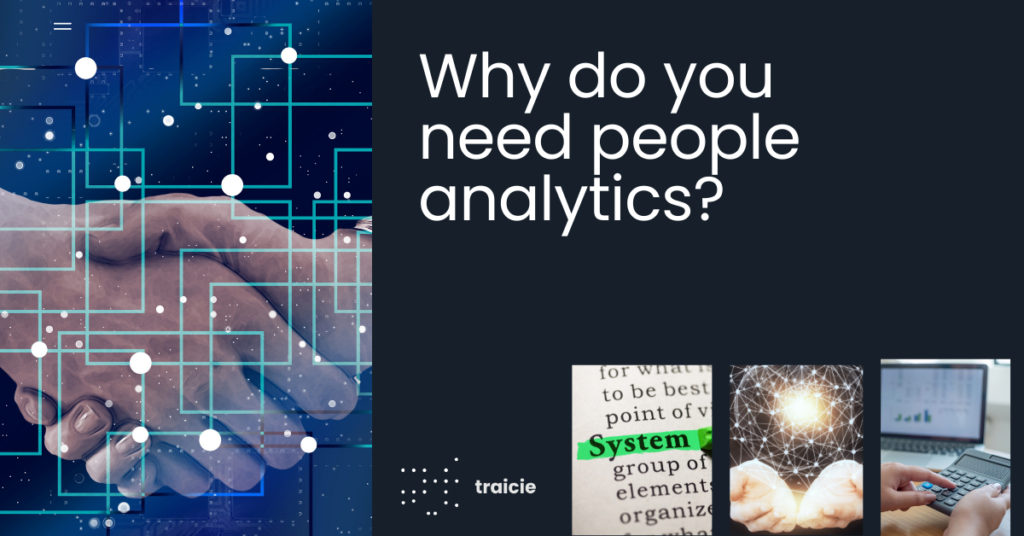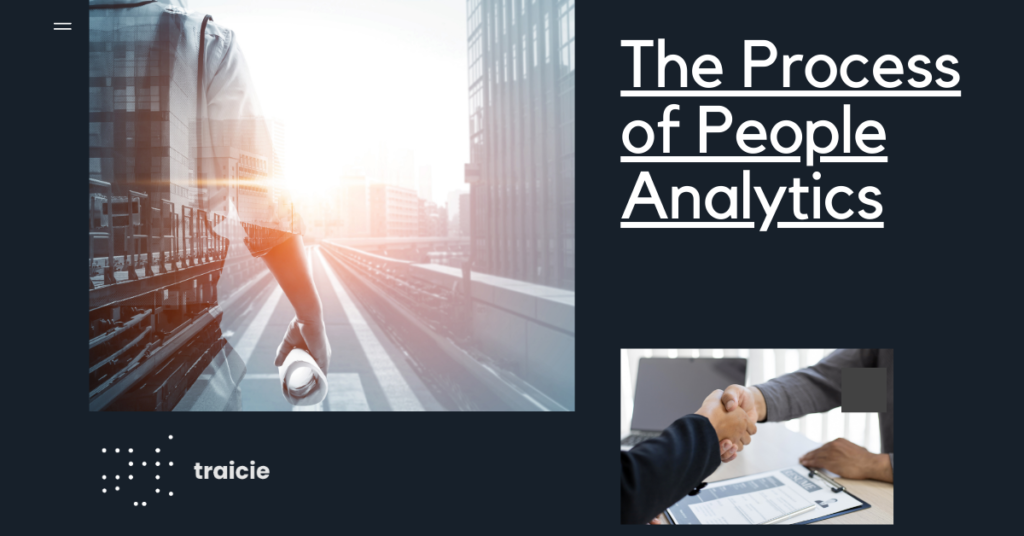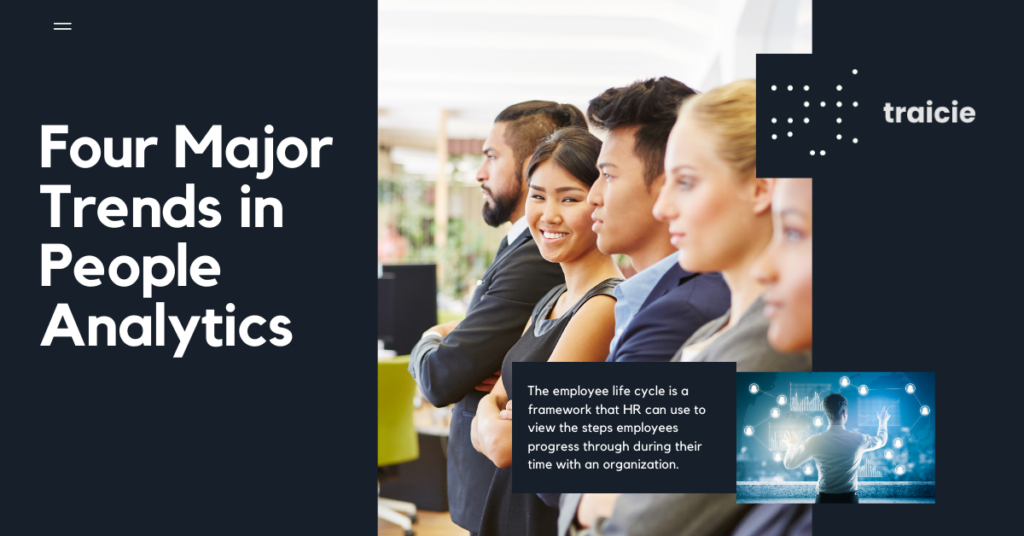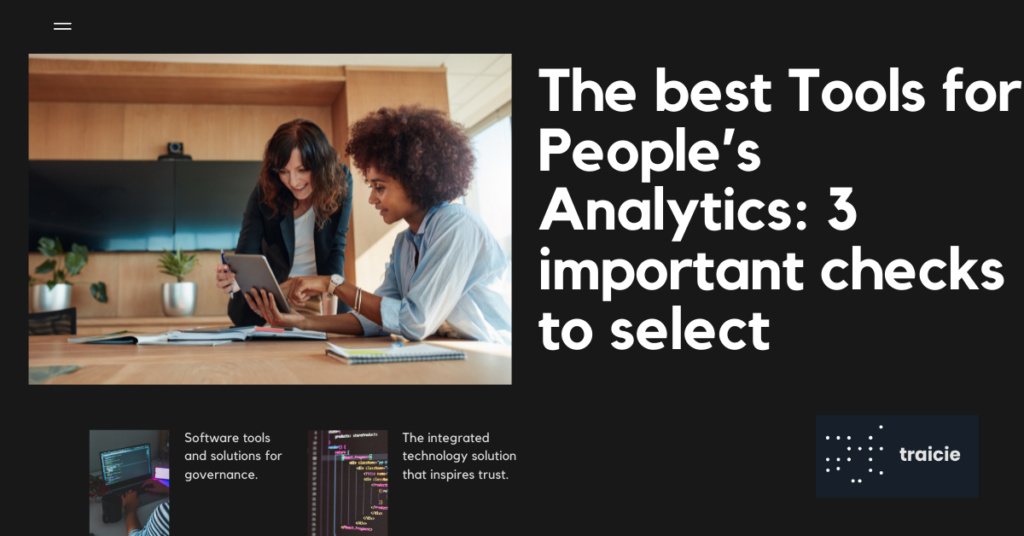People Analytics is a strategy for examining all employee’s processes, functions, obstacles, and opportunities at work, to improve internal systems and achieve long-term company success. According to Deloitte’s most recent studies, People Analytics is soon becoming the new HR currency. Through methods including; improving compensation, minimizing HR assistance tickets and increasing job offer admission rates. Let’s start at the beginning and get right to the basics of People Analytics.
What Is People Analytics?
The definition of People Analytics: People Analytics, or also referred to as “Talent Analytics” and “HR analytics”, aims to use statistics and several techniques for gathering, analysing and interpreting data. Here, People Analytics aids in the improvement of judgment.
As a result, it will be easier to make more informed, strategic, and data-driven decisions about hiring, performance management, and retention across all stages of the employee lifecycle. To enhance these processes and create long-term business performance, People Analytics is a method for assessing all people processes, functions, problems, and possibilities at work. Hence, it is entirely goal-focused and informational.
The market for People Analytics has grown quickly in the past several years in terms of; distributors, clients, and income. This is a sign of the importance of data driven information to HR departments and the businesses they support. The company’s initiatives to raise employee satisfaction and its’ emphasis on employee fulfilment may have contributed to this growth.
What is the importance of people analytics?
The function of People Analytics
- Aid efforts in hiring, performance management, remuneration, succession planning, and retention.
- Foresee and control the bad performance of salespeople in companies.
- Explore how staff characteristics affect patient outcomes in hospitals.
- Track workforce expenditure and the creation of new revenue streams by examining client and labour statistics.
Do you know that traicie people analytics tools for recruiters can help HR Team in strategic operational value in recruiting process for term of:
- Help decide more effectively which candidates to hire, which employees perform the best, who is being paid appropriately and how to improve employee retention. According to data from People Analytics, which can also support intuition, a person with a certificate from a community college may frequently make a better worker than someone with a four-year degree.
- Discover the best candidates for the business, forecast talent shortages, spot people who might be leaving and identify high performers.
Do you know that traicie can help you to Leverage your Hiring Process Effectively?
Why do you need people analytics?
The advantages of People Analytics
Due to the possibility of improving HR efficiency and commercial results, HR departments are now required to include employee data analysis in their everyday operations.

Below are a few of the potential advantages of employing People Analytics:
| Time-saving Finding, selecting, training, and developing personnel can take a lot of time. |
isn’t necessarily directly related to strategic goals. The HR department can spend more time on activities that will provide greater outcomes for the firm as a whole by focusing on the individuals and programs that will be most helpful, thanks to People Analytics. |
| Generate valuable insights Giving workers results they can grasp is made possible by combining data visualization with People Analytics. |
Employees know where to adjust their performance, and a better feeling of ownership motivates them to do so because they can see and understand their performance statistics within the larger context of strategic business goals. |
| Increased output People Analytics can be applied to data from employee engagement surveys |
To assist in identifying what keeps employees engaged or what gets in the way, especially as more staff work remotely. The usage of HR analytics in conjunction with contact tracing for COVID-19 is likely to increase. HR analytics can also be used to investigate health trends and absenteeism problems. |
| Increase employee satisfaction The morale and productivity of an employee is frequently associated with his or her sense of belonging within the organization. |
People Analytics may help HR and data scientists to collaborate and identify the needs and wants of the employees, improving the social- and working environment. |
Enhance retention
Retention may increase as a result of People Analytics’ capacity to enhance employee engagement. Analytics may show recruiters on the HR team the causes of staff’s unfavourable attitudes as well as the reasons why workers stick with the organization. With the aid of these analytics, businesses may locate any skill gaps in their teams and try to close them to retain teammates.
The Process of People Analytics
Today’s People Analytics is far more logical and foresighted. The main stages are part of the procedure to adhere to that objective.

Step 1: Analyse important data
The main question in this situation should be “What data is pertinent to our business goals”. By focusing your research on operational duties, within the people management spectrum, you can save significant resources while achieving real commercial results.
Analysing the data may be time-consuming if it does not provide strategic value. Utilizing the appropriate survey management, data mining, machine learning, statistics, and strategic workforce management technologies also requires knowing what to concentrate on.
- Step 2: Research, discover, and enlarge
It is essential to choose a People Analytics tool by:
Researching the industry, testing out several possibilities,.
Determining which solution will benefit the organization the most in a crowded and fragmented market.
Techniques for data mining, data transformation, and data visualization are all available. Specifically, they are all combined into a simple self-service interface.
In brief, Widely-featured platforms frequently necessitate a great deal of manual labour to get crucial data, and there are methodical investigations to examine these characteristics.
Step 3: Prepare a strategy scheme
Create your strategy after you completed the first to steps and are aware of your ultimate objective, the needed data and the choices you have. Correspondingly, Using big data and predictive analytics for people management, leadership skills, and organizational capabilities could frequently improve the action plan.
Furthermore, having a clear plan of action makes it possible to better understand why adjustments may be occurring and where the company is headed, which can help in attaining more stakeholder support.
- Step 4: Avert legal pitfalls
It is essential to preserve legal compliance while collecting all data. Verify the data source methods and processes with a legal team before you begin the analytics project.
Before any personal data may be used or published, the results obtained from the raw data must also be cleared. It is wise to stay up to date with developments and double-check legal compliance in our digital world, where data protection and privacy rules are still changing.
Step 5: Make systems more efficient
Regardless of the project’s complexity, the overall approach that the procedures have to follow must be straightforward and efficient. Consequently, The fundamental steps in data analysis and interpretation should be simple to use, update, and understand.
In brief, Create a basic blueprint that allows you to standardize all data steps going from collection to processing and analysis. Unstandardized process structures can cause needless difficulties; like ambiguity regarding the order of actions required, wasting time or the recurrence of needless sub-processes.
The goal is to strike the ideal mix between People Analytics’ flexible, configurable systems and procedures and its few moving elements.
Step 6: Create a fact-based, quantifiable HR business plan
Obviously, Clear KPIs and ROI goals, for People Analytics projects, make it possible to monitor the impact often and transparently. A successful formula must be supported by facts and workable implementation plans.
- Step 7: Apply technical assistant
Nowadays, technology permeates every element of life, but this is especially true of processes like People Analytics. A large amount of analytical data must frequently be handled with little to no margin for mistakes. Real-time data is easily available thanks to modern HR IT tools. Agility and real-time intelligence nowadays may set you apart from the competition. Therefore you need to take advantage of this chance.
Four Major Trends in People Analytics
By and large, The trends around People Analytics develop throughout time with the advancement in data-mining technology and data-interpretation techniques that underpin it. Here are the top 4 trends influencing both People Analytics as a discipline and how it works with businesses. Some trends affect People Analytics and then all other facets of HR as a result of their double-loop effect.

- Transforming what HR is and does
People Analytics is rapidly altering how HR functions. Moreover, It impacts everything from recruitment to performance evaluation, pay planning, growth mapping and retention.
People Analytics is swiftly evolving into the new HR currency, according to recent studies by KPMG. For example, raising the acceptance rates of job offers, decreasing the number of HR support tickets, and improving remuneration.
Additionally, as HR procedures change to keep up with business requirements, People Analytics is transitioning from being a one-time project into a real-time. Hence, it is a quickly adaptable tool that HR can use to its’ advantage.
1. Transforming HR business interactions
The relationship between HR and business stakeholders (internal and external) has changed as a result of recent changes in the workplace ecosystem. People Analytics must evolve to reflect the most recent developments in leadership. The current need is for intelligent understanding, and more openness is a major trend that is rising in this area.
To better anticipate and organize tasks, businesses nowadays need to be able to make sense of seemingly unconnected data streams and discover significance, correlation, and possibly even interdependence between one or more aspects. Therefore, People Analytics has the potential to offer practical advice that will aid in the processes of strategic planning and implementation.
- Transforming the HR-employee relationship
Employees today have consumer-level expectations. Companies are using People Analytics as a springboard to improve the employee experience. Every interaction a potential worker or applicant has with a company is a data point that may be used to draw intriguing conclusions. Hence, it is necessary to improve the relationship that HR professionals has with the ordinary employees.
* Transforming the quality of insights
Over the past few years, there has been a change in the standard of insights that are expected every day. If you concentrate on two crucial factors: analytics literacy and data security, People Analytics can live up to these expectations.
To reduce reliance on technical staff and to foster the growth of new viewpoints, more employees will need to become knowledgeable in analytics. Additionally, Data integrity and data security will need to be enhanced and maintained for all listening channels and pulse checks as People Analytics becomes a mainstay at enterprises.
We talked about legal compliance, but in an ideal world, data security should go beyond that and become a cultural value throughout the firm rather than being a quick check only to be compliant.
The best Tools for People’s Analytics: 3 important checks to select
Selecting the best People Analytics tools can frequently appear like a very difficult endeavour due to the wide range of suppliers, alternatives, and readily available subscription plans. The following three-level need-based check will help you choose the best choice.

Utilize fundamental dashboards enabling you to collect, assemble, and visualize data to set up with People Analytics.
| Level 1: A functional HR dashboard | Data access and usage are made simple by tools like Power BI, Tableau, and Qlik. Your top priority with a level 1 requirement should be to keep your People Analytics system as straightforward as possible. |
| Level 2: A intelligent human resources dashboard | To process information more effectively and come to more sound decisions, you might have a continual stream of important information. Specifically, Excel and SPSS are powerful statistical tools as well, however, they may not have the same wacky visuals and social media-like interfaces. While setting up takes some effort, tools like Visier offer comprehensive analytics options. |
| Level 3: An HR forecasting dashboard | When your firm aspires to both evaluate data and generate logical forecasts based on emerging trends, you are operating at the third demand level. With the use of these tools, you may study behaviour and make predictions about what will happen next. |
Python or RStudio can help with advanced analyses for large quantities of data, though they might require you to hire data scientists specialized in the field.
Conclusion about Talent Analytics
You can learn more about the behavioural features of work, comprehend the cause-and-effect link between various human and non-human components at work. Additionally, make smarter selections with the most recent People Analytics and workforce analytics solutions.
Specifically, The three things to keep in mind are:
- knowing what data you need to quantify and qualify,
- being aware of current trends and being aware of your ultimate objectives.
- ——> Your firm will be able to take advantage of the most recent People Analytics offerings. Then the firm could ride the most recent trend waves toward a wiser, healthier workplace. In any cases, remember to provide your HR with the freedom to upgrade their knowledge and abilities.